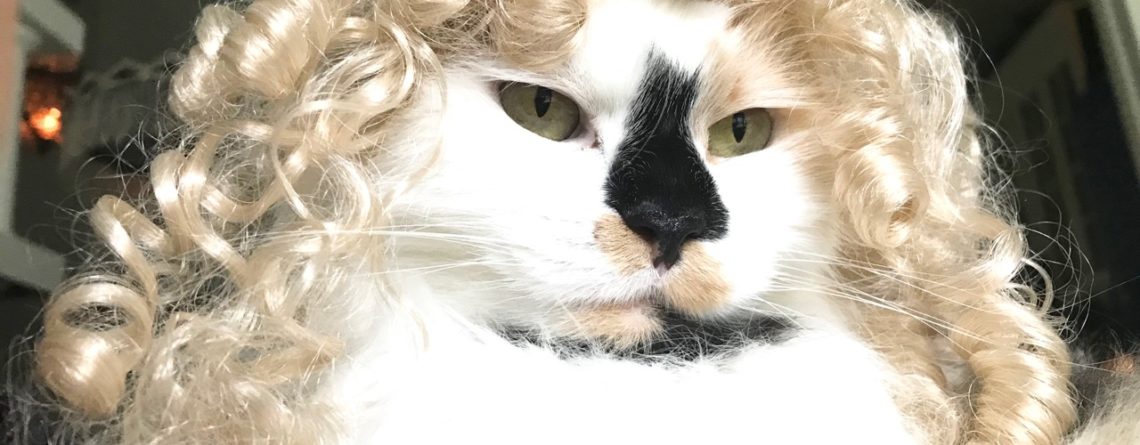
Hello! This is Jill Tran from Tran + Thomas. I have had zoos of animals since I was a kiddo and have learned a lot over the years…both by living with pets and designing spaces for my clients with pets. Here are a few of my tips to save your home, sanity and the relationship with your pet!
Chewing and the “right” dog toys
I have had a few dogs that know the difference between fabric toys and Mom’s stuff… but it is much easier to avoid any confusion. Why do we offer our dogs chew toys made of fabric and then get upset when they chew the sofa or pillow? We give them ropes to chew on and then are frustrated when they chew the rug fringe. Confusing, right? We can fix this!
Offer your pup toys that are NOT made of the same materials as the valuables in your home such as:
- Tennis balls
- Kongs and rubber chewers
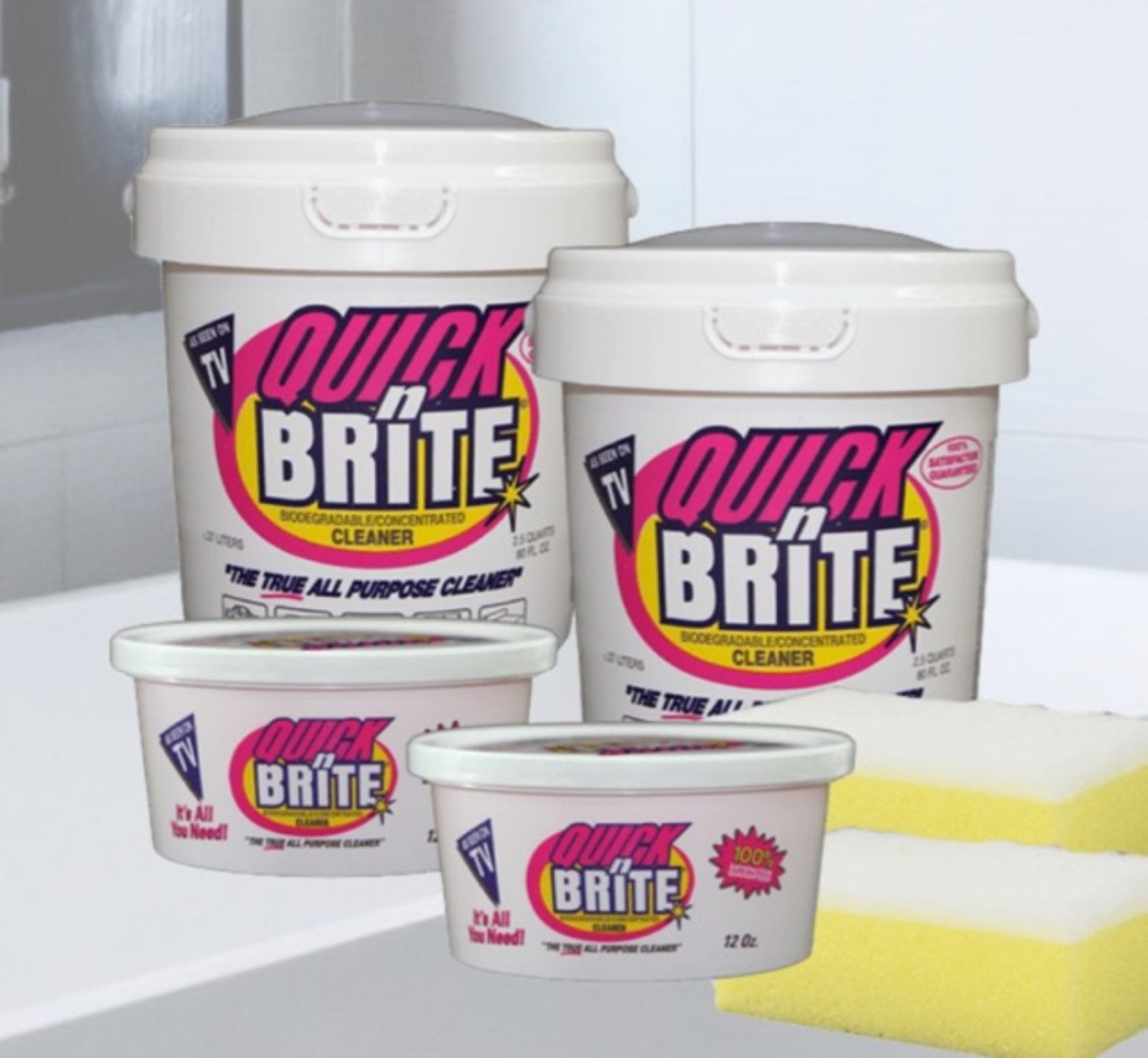
Removing stains
I can’t stress enough watching this segment (linked below) and reading this blog. Stains CAN be removed…and most people do it incorrectly!
- Watch: Jill Fox 4 Morning News Show, removing stains
- Read Jill’s blog: Finally, Remove That Stain! A Great Guide To Defeating Those Stubborn Eye Sores
- If you can throw an item in the wash and it won’t destroy it (an example is rugs can fall apart), a gallon of vinegar and box of baking soda can work wonders with odors and stains in the wash.
- However, before you toss an item in the wash, remove all of the stain you can by hand. I will run water through the stained area in an attempt to take the stain’s particles away from the fabric fibers. The washing machine’s agitation will spread the unwanted stain everywhere, so this is an important step to getting your item looking and smelling clean.
- If using the machine, I will wash a soiled item a few times. The first is to remove the stain (use your soaps and cleaners here). The second is to address anything left, including odors (this is when I use my Odoban or vinegar and baking soda).
- Air dry in the sun, if possible and be very careful with your dryer. If the dryer’s temperature is too hot, it can disinfect, but may reactivate any adhesives (think rug backing) which will then release the yarns and the rug can come apart. Also, anything with shag of any kind will be ruined by the dryer forever. Air dry any time you can.
- Two wonderful products that have saved me countless times are my favorite stain remover, Quick N’ Brite and also an excellent pet smell remover.
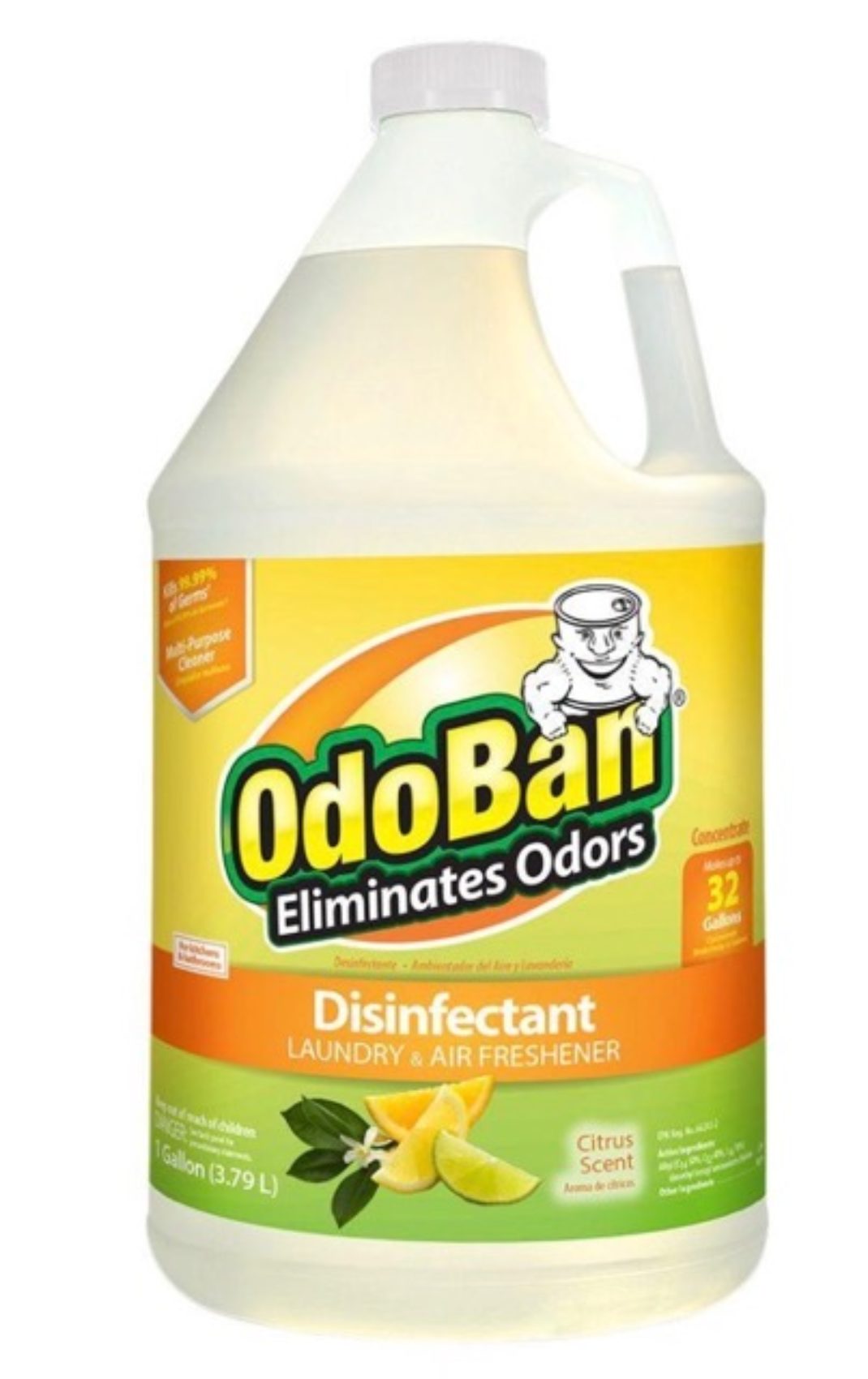
Best product I have found for pet odors. You need this one, too.
- Got a barfer?
- They’re fun, aren’t they? Shop differently for your pet food. Consider the dyes and colors added by the manufacturers and purchase a food you might remove the stains easier.
- The Furminator is an excellent brush to keep that fur at bay. Keep them brushed to keep down the furballs. Even if you can just brush the “main areas” of your pet, that will help tremendously.
- How to introduce new furniture, rugs, etc. to your home
- No one understands wanting to immediately use new furniture and rugs more than me. However, even a few days of careful work, can save your new pieces.
- New rugs? They seem to be a pet “favorite.” Before they ever hit the floor, hang them from stair railings or over barstools, etc. inside your home, so your pets can smell them and become familiar before they can walk on top of them. This can reduce them eliminating or marking them.
- Can’t hang a rug first? Foil is a champ. Lay crumpled foil across your new seating for several days or until your pet loses interest. Another option? I will try smaller pieces of packing tape upside down in the same spots. Yes, I know they can get the tape caught in their fur, but the point is to make them have a little discomfort when they are in the area. I would much rather a few pieces of tape in their fur, but then Kitty gets to keep her good home.
- Cushions from new furniture placed on their ends also allow a pet to get used to upholstered piece’s smell before they can have the chance to walk on them.
- My friend taught me that if you have a large dog you are trying to keep off of the sofa, the underside of an office chair roller mat (the kind you place under your office chair if you have carpet) has a shallow, bumpy side that doesn’t damage paws, but is uncomfortable enough they won’t lay there.
- Got a puppy? I know it is SO tempting to have them on furniture, but keep in mind where you want them not to go when they are big. Train them not to get on your furniture as a puppy is very important.
-

This is Dr. Tofu James. He’s a great little guy, but is known for the occasional accident.
Marking cats
- When my gold cat, Hershel thought it would be a good idea to use a basement corner in an unsavory way, I started placing his favorite moist food right there. It worked!
- Fresh citrus juice placed on a paper towel in the trouble spot is an good deterrent.
- Again…tape upside down or foil work wonders.
Scratching
- Got a scratcher? The foil and tape trick mentioned above can make scratching no fun. I have scratching posts with catnip on them hidden on every floor of the house. If I keep the catnip on them (I set it on the top of the post so they have to stretch to get to it), the posts get 95% of the scratching. Of course, also keep their nails short…even if you do one nail a day to get the job done with a cat that hates to have their nails clipped. Again…long term… I would rather a tiny bit of discomfort for your pet, but you all live in harmony and the pet keeps a great home.
-
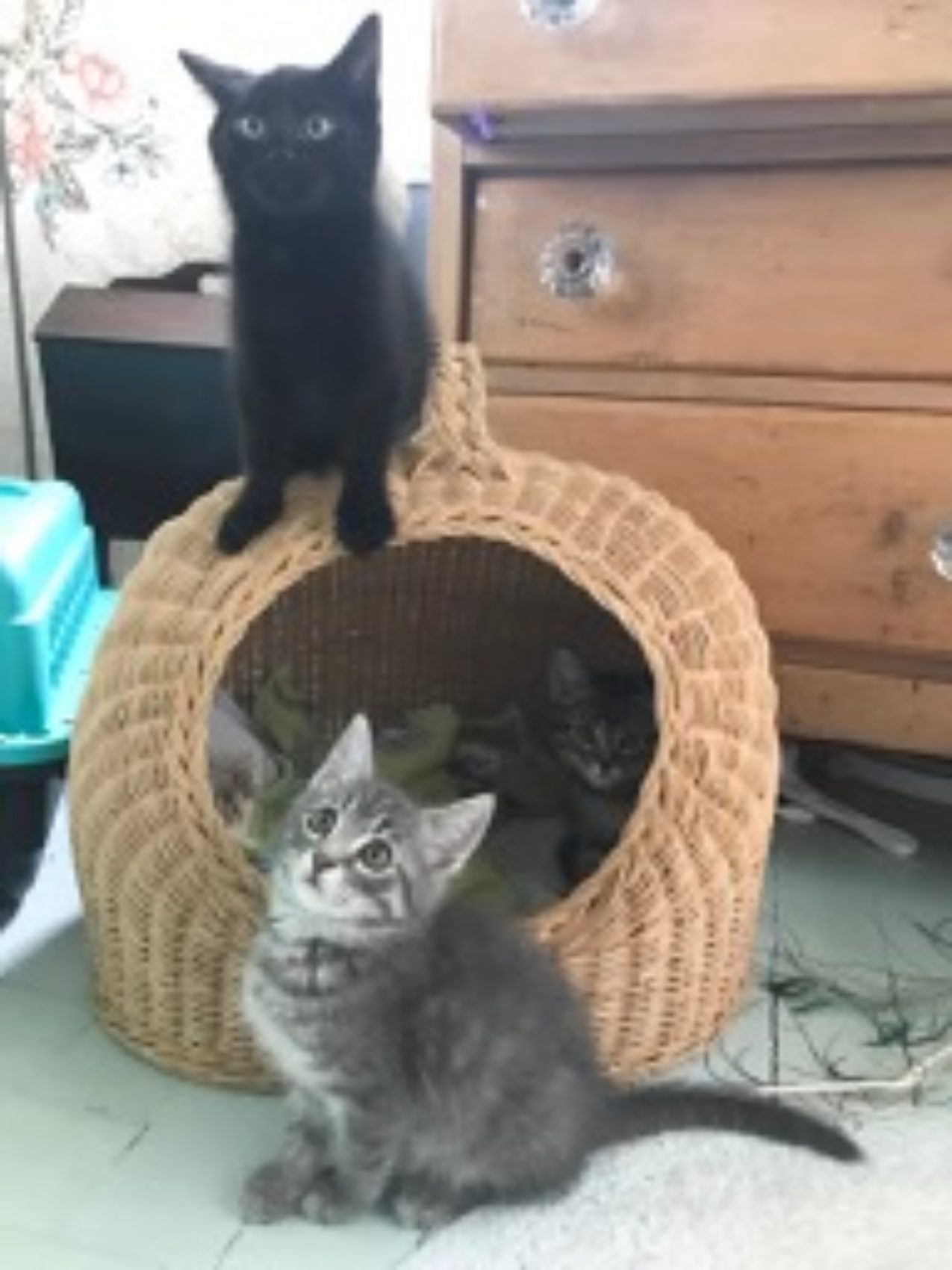
Such a darling group. These are foster kittens that my mom was caring for. Talk about turning your world upside down…with cuteness!
Leather furniture
- Leather is great for keeping fur at bay, but can scratch very, very easily. The key? Use a warm hairdryer to reactivate the oils in the leather and rub the scratches out.
Cats in potted plants
- Foil can work, but more attractive are bamboo skewers painted black and pushed into the soil with the sharp end down. If they stick out pretty far, they make walking (and squatting) uncomfortable. This method also allows the plants roots and soil to breathe, as opposed to foil. It is also a super trick for squirrels in your outdoor pots!
Flooring choices
- LVT (Luxury Vinyl Tile)
- Yes, this one is as tough as nails (doggie nails). It is on my main floor of my home as it is the kindest and most forgiving with pets…and kids! Vinyl is no longer a bad word, but a smart choice for those that love design and their pets. There are some wonderful products available that can give your home a great look. Ironically, the day they were laying mine, my American Bulldog, Ozzie literally did the Scooby Doo run-in-place-but-go-no-where on the first piece of vinyl flooring they put down! Not a scratch could be seen. Had that been wood, I would have cried.
- Wood
- My true love is a gorgeous wood floor. If your pets are on the smaller side and nails aren’t such an issue, it can be a fabulous choice. You’ll want to have it sealed with a high performing product to reduce your stress and keep your floors looking their best. Got fur? Lower the sheen of your top coat to keep the look of dust bunnies and general dust at bay.
- Laying new carpet
- This can be a tough one. I do love a room of fresh carpet. So pristine…so lovely…and so scary with pets and kids. I have always approached carpet in this way: If you are replacing carpet, you might try treating the subfloor once the old has been removed. I have had my subflooring bleached with a mop or sprayer and then really, really let it air out. It’s an insurance policy for a home that isn’t brand new, from previous pets and their odors. Also, when your pet first enters the room of new carpet, be there with them and talk softly. They need to know that all of this new weird stuff in here is okay and not a threat. Like rugs, if you are able, take a piece and hang it vertically so they can smell it all they want, but can’t stand on it to do their business, try that. Foil placed immediately in potential trouble spots can also help…beat them to the areas they might favor before they are found.
- Tile
- A tried and true animal resistant product.
- Get sandless grout to reduce cleaning issues and pits in sanded grout
- Have your grout sealed really well or use a self sealing grout product.
- Carpet and pad options
- The pad with the plastic on top or the “liquid barrier” that resists stains soaking in… Once the liquid hits the barrier, it has to go somewhere, so it spreads out. The carpet fibers then absorb the liquid. The benefit of the liquid staying at the top, is if you have a wet vac, it can more likely be vacuumed up and it won’t penetrate all the way to the subfloor. Or with a standard pad, the liquid will go straight down. You have to make a choice of what is right for you.
- Nylon is the better fiber, no question, for stain resistance. It is way more durable as a fiber but a polyester fiber is more stain resistant. The key is the stain treatment they use does work on both. So, go with the more durable Nylon, as you are getting the same stain guard either way.
-
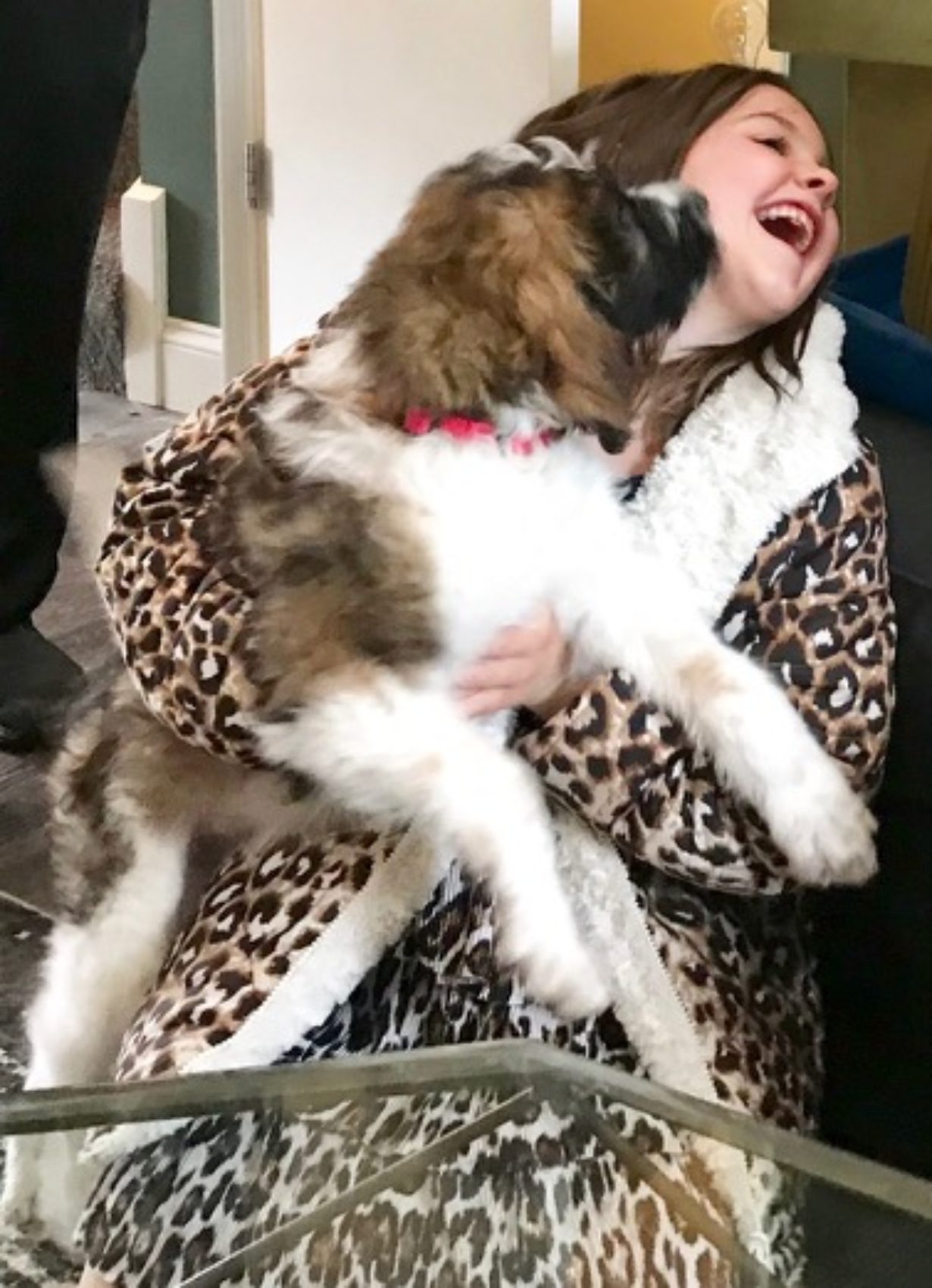
Puppies are precious… and are little problems as well. Stain removal tips are above! This is little Mochi with a new friend.
- Litter boxes
- I have always heard and practiced one per cat, plus one more. My best luck was when they were in two different areas of the basement, so they had some privacy from each other and potential noise.
- I offer two different little types of litter, but consistently put the same litter in the same box. The variety seems to help. Who doesn’t like options?
- I have always been told that the food shouldn’t go right by the litter, however, in my experience when the food is near the litter, it helps…on the same floor for sure. Food and hunger brings them to the box area on a regular basis which encourages litter box use. When I used to keep my boxes in the basement and their food in the kitchen, it didn’t go as well.
- Sometimes, simply offering your cat cash works to draw them in.
- Scoop all of your litter boxes every day.
Moving into a “new to you” home
- It is so exciting to move into a new home. We often design our client’s custom homes and basement remodels specifically with special pet areas or pet proof products! A few suggestions:
- Keep your cats in a small area for the first several days to a week of you moving in. There should be enough litter boxes (see above) and food at the opposite end of the room. Be sure there is a protective and cozy area for them, too. A favorite kitty bed or a box so they feel they have some snug “protection” from this new world. Once 48 hours or so has passed, you may open your cat up to a slightly larger space in the home. As each day passes, you may continue to enlarge the spaces but I suggest doing so slowly. Note: when selecting the space to start them off in, remember that space is likely the one space they will continue to feel the most comfortable in… potentially for days, weeks or even months. So plan carefully.
- When they are confined at the beginning to smaller areas, I would always go in the rooms and spend time with them. I didn’t need to be touching or petting them the entire time, but would also work or read. Being there was a clear signal that they weren’t being punished or isolated, but rather, this was a new and happy place and their person was still with them. That can be tough to find the time, when you are trying to get settled in, but so important!
If you ever have a pet design question, please feel free to call our offices and reach out and I will do my best to offer you some tried and true suggestions and tips!
Hug your babies!
Jill

About Tran + Thomas
Built on the foundation of a 30-year, family-owned Interior Design business, Jill Tran and Carmen Thomas opened Tran + Thomas Design Studio in 2011 bringing a combined 36 years of experience to their projects. They work on both residential and commercial projects across several styles. Interested in their services? Call (913) 268-9595 or schedule a consultation below.
